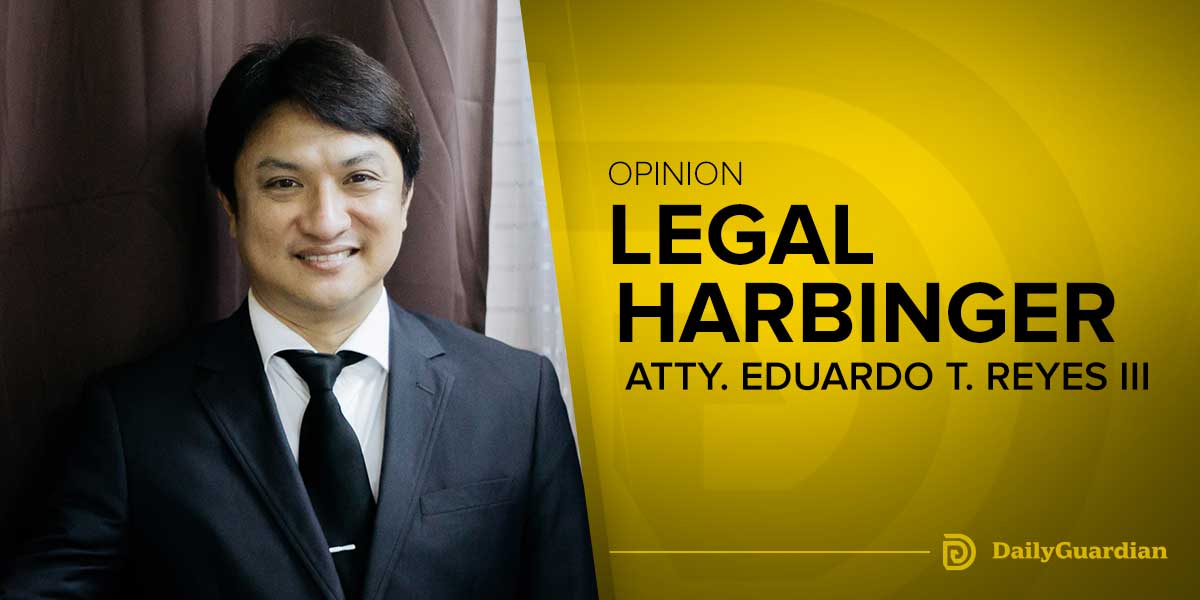By Michael Henry Yusingco, LL.M
Time to be technical here. Please, bear with me.
Article XVII, Section 1 of the 1987 Constitution provides:
“Any amendment to, or revision of, this Constitution may be proposed by:
(1) The Congress, upon a vote of three-fourths of all its Members; or
(2) A constitutional convention.”
Section 2 then provides:
“Amendments to this Constitution may likewise be directly proposed by the people through initiative upon a petition of at least twelve per centum of the total number of registered voters, of which every legislative district must be represented by at least three per centum of the registered voters therein. No amendment under this section shall be authorized within five years following the ratification of this Constitution nor oftener than once every five years thereafter.
The Congress shall provide for the implementation of the exercise of this right.”
We have learned from the many televised discussions about Charter Change (Cha-Cha) that the first two ways are the only plausible modes of changing our constitution. The first option is popularly called Con-Ass, short for Constituent Assembly, while the second way is known now as simply, Con-Con.
Note that the third mode, labelled now as “people’s initiative”, is not yet possible because there is still no law to govern its operational implementation as required by the constitution.
It must be highlighted at this point that the 1987 Constitution has made a distinction between the kind of change that can be pursued, namely, amendment or revision.
According to the Supreme Court in the case of Lambino vs. Comelec, “Revision broadly implies a change that alters a basic principle in the constitution, like altering the principle of separation of powers or the system of checks-and-balances. There is also revision if the change alters the substantial entirety of the constitution, as when the change affects substantial provisions of the constitution. On the other hand, amendment broadly refers to a change that adds, reduces, or deletes without altering the basic principle involved.”
And so, the Con-Ass mode would be more appropriate when pursuing an amendment, for instance, inserting the words “as may be provided by law” in certain economic provisions of the charter. Whereas, the Con-Con would be the more sensible route if revision is the intended reform, such as shifting to a federal system or a parliamentary form of government.
The Con-Ass path is also permissible when it comes to proposing revisions to the constitution. But for this way to really work, it would require lawmakers who are sincere about constitutional reform. This means lawmakers who have actually studied the constitutional pathologies sought to be remedied and who are unafraid to subject their proposals to a thorough and robust public deliberation.
Knowing the difference between amendment and revision is a potent tool to gauge the seriousness and sincerity of Cha-Cha proponents. If the proponent is pushing impactful changes, such as altering or removing term limits, and suggests a Con-Ass to materialize their proposals, then that should activate the silent alarm in our heads.
We have seen in the past lawmakers aiming to use the Con-Ass mode to perpetuate their hold on political power. Some of them have openly proposed to getting rid of term limits as if this will be beneficial to our democracy. In fact, there are still quite a number of members of the House of Representatives who have this end goal in mind.
On the other hand, when proponents recommend the Con-Con mode to implement mere amendments, usually referring to the restrictive economic provisions of the 1987 Constitution, we should also be listening to that skeptical voice trying to warn us of impending danger ahead. It is worth highlighting that a Con-Con has carte blanche authority when it comes to proposing changes. In other words, it cannot be limited to tackle specific amendments only.
In sum, the choice between amendment or revision will also determine which mode of change should be considered. If our lawmakers are pushing for Con-Con, then that means they are planning to propose big changes to our constitution. Nonetheless, we must also be wary of proponents who are overtly advocating for substantial alterations to the charter but still insist on opting for Con-Ass. Always remember that if the intent is to overhaul the constitution, or even replace it altogether, then a Con-Con would be essential.
Con-Ass suits mere amendments to the 1987 Constitution. But it is also still unclear how will this be operationalized. And even more concerning is the fact that lawmakers are tasked to determine how to proceed with this mode. Immediately there will be a question of trust. Can we rely on these dynastic politicians to rise above self-interest? Can we count on them not to railroad the process?






















